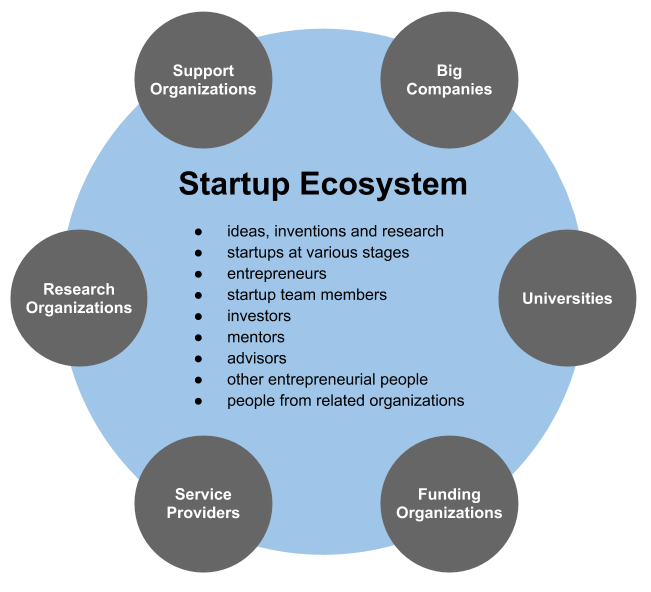What Is Startup Ecosystem?
|
A startup ecosystem is formed by people, startups in their various stages and various types of organizations in a location (physical and/or virtual), interacting as a system to create new startup companies.
These organizations can be further divided into categories: universities, funding organizations, support organizations (like incubators, accelerators, co-working spaces etc.), research organizations, service provider organizations (like legal, financial services etc.) and large corporations. Different organizations typically focus on specific parts of the ecosystem function and/or startups at their specific development stage(s).
|
|
Elements Of Startup ecosystem
|
Organizations and activities with start-up activities
|



